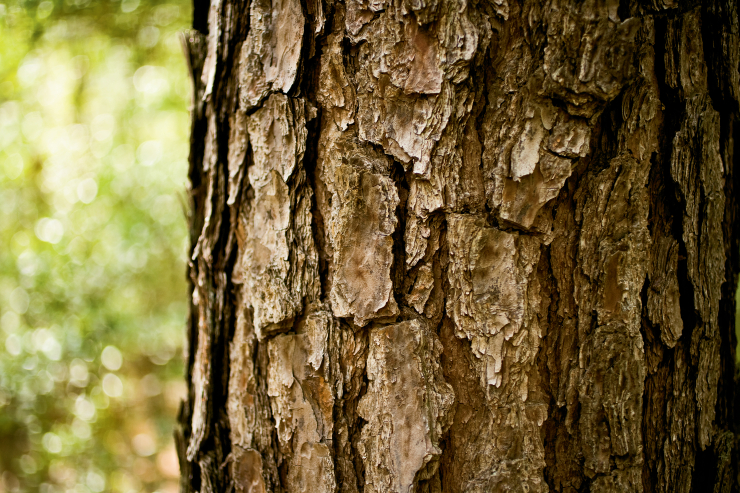Home > Alabama > Alabama Crops & Livestock > Alabama Forests Produce Profitable Timber, Hunting Lands
Alabama Forests Produce Profitable Timber, Hunting Lands

When you think of Alabama’s agriculture industry, row crops most likely take up the top spots on everyone’s lists.
But forestry has been one of the state’s strongest industries year after year in exports, acreage and, probably most important, its impact on the economy.
“There are a lot of things that make us successful,” says Rick Oates, director of the Alabama Farmers Federation’s Forestry Division. “The climate, with its 50 degree-plus average temperature, gives the state a strong growing season. The paper and lumber mills – the state is second in the nation in pulp production and third in paper production – are strong here, too.”
And what is the key to Alabama maintaining the vital resource?
Its people.
“People understand the importance of forestry to the economy,” Oates says. “Everybody realizes its impact as the backbone of the economy.”
The private ownership of the state’s timberland helps lift Alabama to its high ranking compared to other states, especially in the west, Oates says.
“Most of the forest land is privately owned; in the 70 percent range is non-industrial land ownership,” he says. “That’s a pretty significant amount of land.
“That’s one advantage we have. In the west, it’s about 70 percent government managed…or mismanaged.”
The mismanagement – or leaving the forests to grow “naturally” – has been cited as a factor in the wildfires that ravage that region year after year. Government restrictions on the government-held land limit the amount of wood that can be harvested, which also hampers economic growth that can be provided by the timber industry.
“Conservation management involves thinning, burning, planting to create healthier, stronger habitat,” says Alan Clemons, Southeast managing editor of Deer & Deer Hunting. “Controlled, prescribed burning may look ugly but the benefits can be almost immediate when new growth emerges.”
“Clear-cutting also draws criticism, but a well-planned replanting strategy also will yield future dividends if a management plan is designed and followed.”
In Alabama, wildfires are a rarity, in spite of the number of wooded acres covering the state, due in no small way to the management practices.
And some credit has to be given to the limited role of the state in the timber business.
According to the Alabama Forestry Commission, the state has 22.6 million acres of forest land which cover 71 percent of the state. Forestry is a $15 billion industry that employs about 70,000 people, providing $2.2 billion in payroll.
With another 100,000 people indirectly employed by forestry, the industry employs about 12 percent of the state’s work force.

The Outdoor Industry
Of course, the land isn’t just for timber production.
Hunters take advantage of the abundance of woodlands for their sport while other outdoors enthusiasts enjoy this natural resource by camping and hiking.
“Conservation management of all forests, whether hardwoods, pines or mixed species, definitely is critical to not only improving habitat for multiple wildlife species, but also is a great aid for outdoors enthusiasts,” says Clemons, a longtime outdoors writer.
Oates says the many uses of the state’s forests prove to be another factor in conservation.
“Diverse ownership is a big reason,” he says. “A lot of people own the land for hunting, but if they need to harvest it, they will.”
Land ownership is growing as more and more people realize the importance of the state’s forests for their own recreation and enjoyment as well as that of others. The number of acres is nothing to be scoffed at, either, Oates says.
“We’ve had an increase in acreage of timberland,” he says. “Over the last 10 to 12 years, there has been an increase of about 1 million acres.”
And outdoor recreation has a significant impact on the state’s economy, according to a survey by the Congressional Sportsmen’s Foundation.
The outdoors “industry” is about a $1.7 billion a year institution and creates about 30,500 jobs with wages and salaries of about $785 million. The foundation’s survey also reports that about $186 million in federal taxes and another $166 million in state taxes are collected.
“For hunting and game species, forest conservation can open the land to new growth beneficial for nutrition, rearing young and more enjoyment during hunting season,” Clemons says. “Hikers, campers and other recreational users also benefit from forest management with more enjoyment of songbirds, wildlife and better access to public and private land.
“While management may, at times, cause a bit of anguish due to the aesthetics of cutting or burning, the payoff comes with a healthier forest for future outings.”




